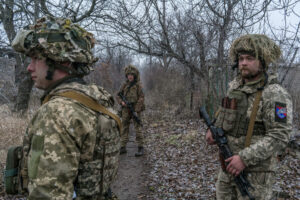Amsterdam, Berlin (16/11 – 10)
Diwali, a.k.a. Deepavali, is a Hindu religious celebration as well as a traditional festival, celebrated across India. Customarily known as “The Festival of Lights”, as it is festooned with arrays of colored illumination, it is held from October to November every year. Deepavali 2023 was celebrated on November 12, over a five-day period.
Deepavali is the annual Hindu celebration of the triumph of light over darkness. Rarely will you visit a Hindu home during Deepavali without passing under a doorway highlighted by a beautiful, vividly-colored picture created out of flour, rice or flower petals. It can take the form of a geometric pattern, a floral shape or a more detailed representation of animals or nature. These artworks are created to usher deities into the home, inviting them to bless the household for the year ahead.
Hindus around the world have celebrated the Deepavali festival of lights for more than 2,500 years. In India, the five-day Deepavali festival is traditionally the grandest annual holiday.
According to Pankaj Jain, a Professor of Anthropology, Philosophy and Religion at the University of North Texas, the Deepavali celebration is linked to stories in religious texts; it is a mystery to divine as to which came first, or when Deepavali was first celebrated.
Many are the stories in India recounting the triumph of good over evil. In the northern part of the vast country, a common story associates Deepavali with King Rama, one of the many incarnations of Lord Vishnu. When an evil king in Lanka (which some people associate with Sri Lanka) kidnapped Sita, Rama’s wife, King Rama “raised an army of monkeys” to rescue her.
The army of simians “…built a bridge from India to Sri Lanka, and invaded Sri Lanka to free Sita – during a battle to kill the evil king,” Professor Jain recounts. When Rama and Sita return north, “…millions of lights were scattered throughout the city of Ayodhya, arrayed to guide them home, simply to welcome them.” Thus lighted lamps have long been one manifestation of how Hindus celebrate Deepavali.
In southern India, Deepavali is popularly associated with the story of the Hindu god Krishna, yet a different incarnation of Vishnu. He is known to have freed about 16,000 enslaved women from an evil king.
In the Gujarat area of western India, the New Year coincides with Deepavali (there are several “New Years” celebrated in India), and Deepavali is associated with prayers to the Goddess Lakshmi, for prosperity in the coming year. During this celebration, celebrants ritually exchange gifts and coins.
Meanwhile, neighbor religions like Buddhism, Jainism and Sikhism appropriate Deepavali to mark important events in their history. Professor Jain pointed out how Deepavali is both a religious holiday and a national holiday in India.
According to Vasudha Narayanan, a Professor of Religious Studies at the University of Florida, not all Indians celebrate Deepavali. Nevertheless, with some 80 percent of India practicing Hinduism—with Buddhists, Jains, and Sikhs accounting for 2-3 percent more, Deepavali is celebrated by the majority of Indians.
Narayanan mentioned how fireworks have come to be a major part of Deepavali celebrations in the last century. During the Deepavali festival of lights, each family ignites their fireworks. Such celebrations have been taking place since before Deepavali.
Hijau Daun (533)















